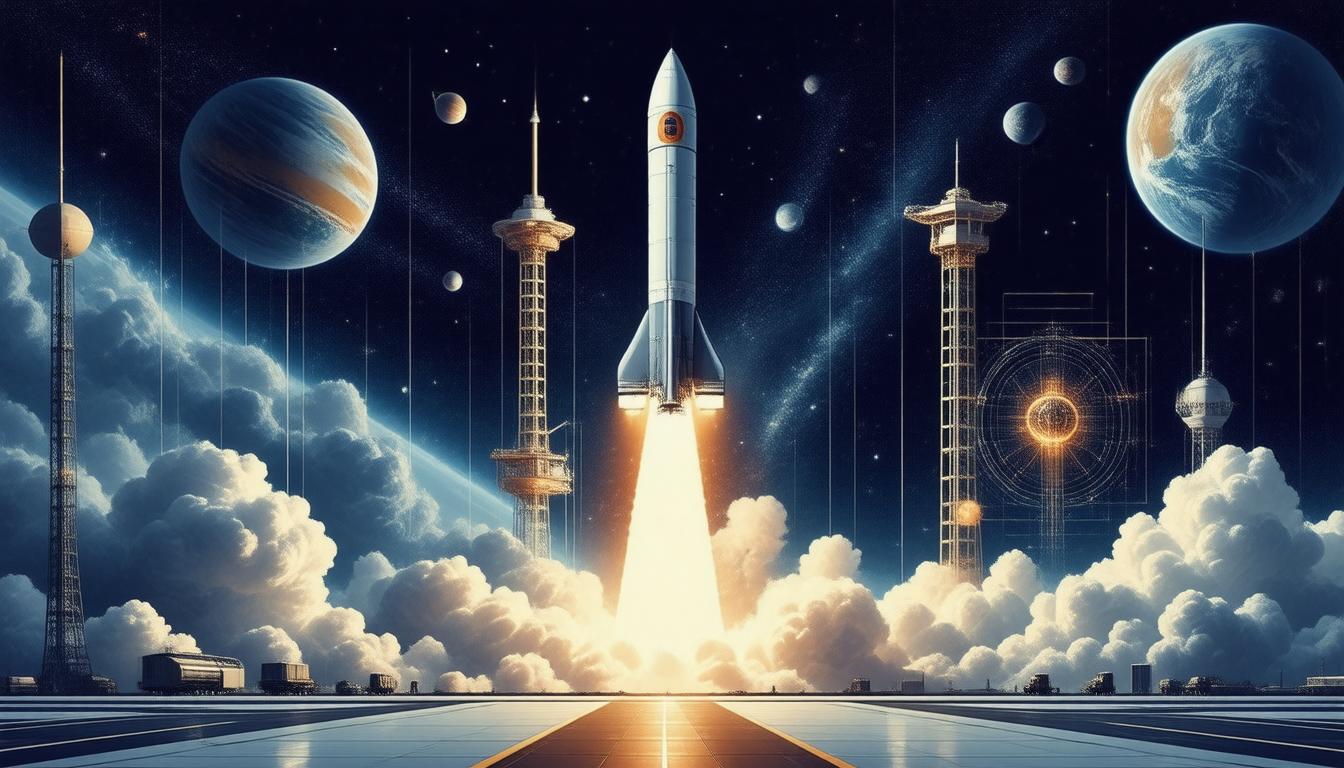Space exploration has always captured the human imagination, and today, the landscape is evolving rapidly with the introduction of advanced Space Launch Systems (SLS). At the forefront of this revolution is NASA’s Space Launch System, a super heavy-lift launch vehicle designed to facilitate ambitious missions beyond Earth’s orbit, including lunar explorations under the Artemis program. This article provides a detailed overview of SLS, its components, capabilities, and its significance in the future of space exploration.
What is the Space Launch System?
The Space Launch System is NASA’s latest rocket designed for deep-space exploration. As the most powerful rocket ever launched, the SLS provides unparalleled capabilities for human missions, including sending the Orion spacecraft, astronauts, and cargo directly to the Moon and, eventually, to Mars. With the ability to perform single-launch missions that can transport significant payloads, the SLS aims to reduce mission complexity while enhancing mission goals.
Unique Features and Configurations
-
Advanced Stages: The SLS is structured around a robust design featuring multiple configurations:
- Block 1: Contains a core stage powered by four RS-25 engines and two five-segment solid rocket boosters capable of lifting over 27 metric tons to lunar orbit.
- Block 1B: Introduces the Exploration Upper Stage (EUS), enhancing lifting capabilities significantly to approximately 38 metric tons for crewed missions.
- Block 2: Represents the ultimate configuration, designed to expand payload capacity even further, projected to lift about 46 metric tons.
-
Core Stage: The SLS’s core stage is a marvel of engineering, equating to a towering 65 meters in length. This component stores cryogenic fuels—liquid hydrogen and liquid oxygen—to power the RS-25 engines. These engines are upgraded versions from the Space Shuttle program and are optimized for peak performance in demanding launch conditions.
-
Solid Rocket Boosters: Supporting the core stage are twin solid rocket boosters, each producing immense thrust during crucial liftoff phases. These boosters have been upgraded from previous designs, eliminating recovery systems to maximize payload capacity.
-
Interim Cryogenic Propulsion Stage (ICPS): Serves as the upper stage for Block 1, allowing the Orion spacecraft to escape Earth’s orbit and embark on its lunar journey. Future missions will transition to the more powerful EUS.
The Artemis Missions: Gateway to Lunar Exploration
The Artemis program is NASA’s blueprint for returning humans to the Moon and establishing a sustainable presence there. The SLS is pivotal to this vision, enabling various missions from crewed lunar landings to launching robotic missions deep into space.
- The inaugural flight of the SLS, the Artemis I mission, successfully launched on November 16, 2022, marking a monumental achievement that tested the vehicle’s capabilities and validated its readiness for future crewed missions.
- Future Artemis missions aim not only to land astronauts but also to support lunar gateways and exploration missions to Mars.
Broader Impact on Space Exploration
The evolution of space launch systems like the SLS is set to transform not just NASA’s capabilities but also those of global space exploration. The SLS’s cutting-edge technology supports a range of initiatives including:
- Interplanetary Missions: With advancements in propulsion and design, missions to Mars and beyond become increasingly feasible.
- Sustainability in Space: By promoting deep space missions, the SLS contributes to the long-term goal of sustainable human presence in extraterrestrial environments.
- International Collaboration: The Artemis program encourages global partnerships, engaging both commercial and governmental space efforts in joint missions and technology sharing.
Conclusion
The Space Launch System stands as a testament to human ingenuity and the relentless pursuit of exploration. Its robust design, advanced capabilities, and key role in NASA’s Artemis program position it as a cornerstone of future space endeavors. As NASA advances toward a sustained presence on the Moon and prepares for human expeditions to Mars, the SLS will undoubtedly pave the way for a new era in space exploration, expanding the boundaries of what we can achieve beyond our planet. With every mission, we get closer to answering timeless questions about our universe and humankind’s place within it.
Join Alpha Centi and give a unique boost to your career and professional profile today! [color=rgb(4, 53, 157)]https://alphacenti.org/join/[/color]


